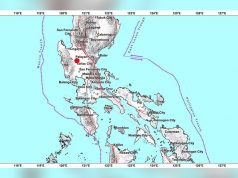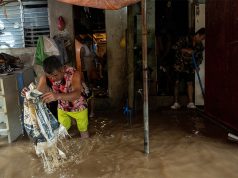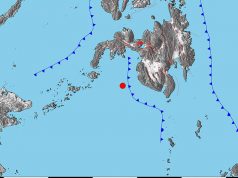Some Filipinos noticed a delay of emergency text alerts from the National Disaster Risk Reduction and Management Council during the earthquake that rocked the metro early this week.
A Twitter user shared a screenshot of the text alerts he received from the agency warning him about the aftershocks of the magnitude 6.1 earthquake from Zambales on April 22, Monday.
The incident happened at around 5:11 p.m. but the user received the text alert at 9:35 p.m. on the same day. He received a similar yet shorter alert at 11:03 p.m.
Oi, delayed ang text ni NDRRMC. Thank you po, aware po ako at nag-iingat. 😂 pic.twitter.com/Tq26i7BeWD
— Halcyon (@halcyon1002) April 22, 2019
Another Twitter user shared that he received the text alerts at a later time, allegedly hours after the earthquake has happened.
“Medyo late ang text blast (niyo) @NDRRMC_OpCen ha? Ganito pa rin ba sistema (niyo)? Paano namin mapapaghandaan ang mga ganitong sitwasyon kung delayed palagi? Tsk,” he wrote.
In a follow-up tweet, he shared that he received the text alerts at dawn the next day.
“Inumaga na ‘yung text eh,” he wrote on 5:06 a.m. on April 23, Tuesday.
Inumaga na yung text eh.
— heyitsJAE!🤦🏻♂️ (@thejaeamper) April 22, 2019
It is to be noted that the text alerts were advisories for the expected aftershocks and not about the earthquake itself as such incidents cannot be predicted.
Nevertheless, it irked some Filipinos who thought that the text alerts on the aftershocks should be sent at an earlier time.
This is not the first time that the agency was called out for sending delayed emergency text alerts concerning natural disasters and calamities.
Last year, the agency admitted that its text alerts warning the public about rainfall intensity due to the monsoon and Typhoon “Inday” were delayed as well.
Some alerts were supposed to be issued at 5:00 a.m. but people, including broadcast journalist Ted Failon, received the text at almost 9:00 a.m.
The NDRRMC is mandated to send emergency text alerts to the public in times of natural disasters and calamities to “prevent injuries, destruction and loss of lives and property.”
It recently warned Filipinos that a text message circulating about a “magnitude 8.0 earthquake” was a hoax.
The agency said that it only forwards advisories from its account which appears on the short messaging system as “NDRRMC” and not as a number.
Other relevant agencies mandated to send text alerts are the Philippine Atmospheric Geophysical and Astronomical Services Administration and the Philippine Institute of Volcanology and Seismology, among others.










